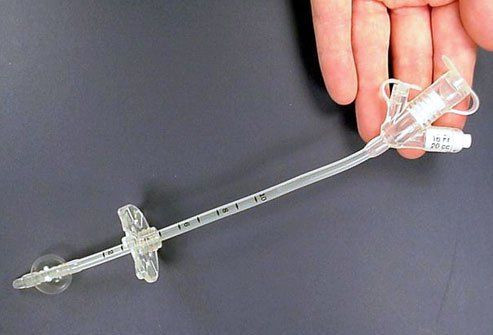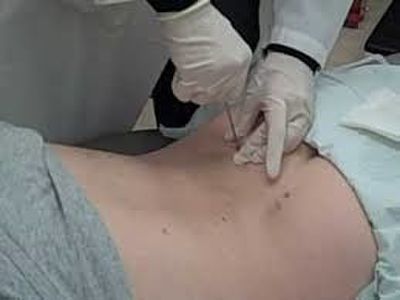
How Do You Replace a Gastrostomy Tube?
What is a gastrostomy tube or G-tube?
A gastrostomy tube (G-tube) is a feeding tube that is placed into the abdomen to provide nutrition or medication to the patients who are unable to feed themselves.
A G-tube is placed through a small cut in the abdominal wall via a surgery. Once the G-tube is removed, the tract narrows down or closes within hours. Hence, it is necessary to replace a displaced tube with another tube immediately.
A simple G-tube requires one to two weeks to form a tract.
When is the gastrostomy tube recommended?
A G-tube insertion is indicated in patients
Who are unable to consume food orally
With cancers of the oral cavities or esophagus
With Alzheimer’s disease
With stroke
With certain conditions of the brain and nerves, where the muscles of the throat and mouth are weakened
When should replacement of the gastrostomy tube be avoided?
The replacement of a G-tube should be avoided in the case of
A tract that has not been matured with the previous gastrostomy.
Infections around the G-tube.
How do you replace a gastrostomy tube?
Before the replacement
The physicians may choose one of the two types of tubes:
Balloon tubes: These are held in place by a water-filled balloon.
Non-balloon tubes: These are harder to pull out than balloon tubes. They need to be placed at the hospital.
During the replacement
The physician usually avoids administering local anesthesia in this procedure. The physician ensures that you lie on a flatbed or reclining chair. A scope is used to replace the tube.
Once you are made comfortable, the physician performs the following steps:
Removal of tube: The initial G-tube may be partially dislodged in the abdomen; hence, it is necessary to remove the tube completely before replacing it with a new tube. In the case of balloon tubes, balloon rupture can dislodge the G-tube. G-tubes can be easily removed by pulling.
Replacement of tube: Once the tube has been removed, the physician performs immediate replacement to prevent tract closure or narrowing. Before inserting the tube, the physician examines the tract. The physician uses a similar tube to replace the existing tube. If the information on the tube type is not available, the physician places a feeding tube or Foley catheter based on the availability.
Confirmation of tube placement: Before using the G-tubes for feeding, the physician confirms the G-tube placement using water-soluble contrast dyes into the tube and taking a radiograph for a few minutes.
After the replacement
Once the physician confirms the tube placement, feeding must be started immediately, and the fluid status of the patients must be examined.
What are the risks involved with the insertion of a g-tube?
Certain risks involved with the insertion of a G-tube are:
Leakage of fluid into the abdominal wall
Infection at the incision site
Bleeding around the tube
Misplacement of a tube into the abdominal cavity
Upper abdomen pain and vomiting
Pain at the incision site











